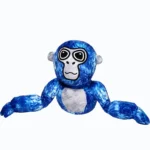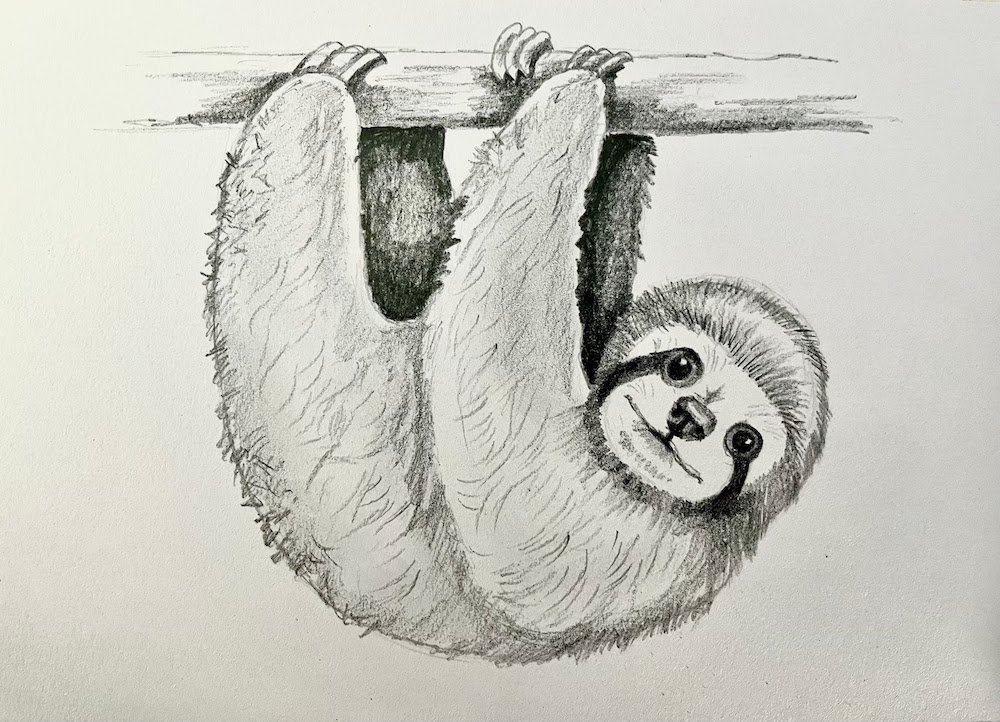Sloth drawing is a fun and relaxing activity for kids and beginners. If you love these slow and adorable animals, learning how to draw a sloth can be a great way to express your creativity. You don’t need to be a professional artist—just grab a pencil, and let’s start!
Sloths are famous for their sleepy eyes, long arms, and hanging from trees. In this blog, we will guide you step by step on how to create a simple and cute sloth drawing. Whether you are making a cartoon sloth or a realistic one, this guide will help you. Keep reading to learn fun sloth drawing ideas and tips!
How to Start a Simple Sloth Drawing for Beginners
sloth drawing is easy when you follow a few simple steps. Beginners often struggle with shapes, but starting with basic forms helps a lot. A sloth has a round head, a chubby body, and long arms, making it a fun animal to sketch.
Begin by drawing a circle for the head. Add a larger oval below it for the body. Light pencil strokes work best so you can adjust mistakes easily. Sloths are known for their curved arms, so sketch two long shapes extending from the body.
Next, add the facial details. Sloths have small, sleepy eyes, a cute nose, and a smiling mouth. Their faces have a unique mask-like marking, which makes them look adorable. Take your time to refine the outline before moving to the next steps.
Easy Steps to Draw a Cute Sloth Hanging on a Tree
Sloths love to hang from branches, so drawing them in this position makes your artwork look lively. Start with the basic shape of the sloth, then sketch the curved arms holding onto a tree.
Draw the tree branch by making a long, curved line. Make sure the sloth’s hands wrap around it naturally. Their long claws help them grip, so add small, curved lines at the end of the fingers.
Now, focus on details. Add fur texture using short strokes along the body. Light shading makes the sloth look soft and fluffy. Once you finish, you can add leaves to the branch to make the drawing look complete.
Sloth Face Drawing: Make It Cute and Expressive
A sloth’s face is one of its cutest features. To make it expressive, start with a simple round shape. Add two small circles for eyes and a tiny nose in the center. Their mouth should have a slight curve to give a happy or sleepy look.
Sloths have dark fur patterns around their eyes, like a mask. Lightly shade this area to give it a soft appearance. Their ears are small and round, often hidden in fur, so keep them simple.
To add more detail, make the eyes slightly shiny by leaving a small white spot in each. A little shading under the chin will make the face look more realistic. These small touches bring your drawing to life.
Cartoon Sloth Drawing vs. Realistic Sloth Drawing
Some artists prefer a cute, cartoon style, while others want a detailed, realistic look. Each style has different techniques, so choosing the right one depends on what you like.
Cartoon Sloth Drawing
- Uses simple, round shapes for a fun and playful look.
- Big, expressive eyes make it look adorable.
- Smooth lines without much shading keep it easy to draw.
Realistic Sloth Drawing
- More details in fur, eyes, and claws for a lifelike effect.
- Uses shading and texture to create depth.
- Focuses on correct proportions for a natural look.
Both styles are great, so try experimenting with different techniques to find what you enjoy most.
Best Drawing Tools and Tips for Sloth Sketching
Choosing the right tools helps improve your artwork. Beginners can start with simple pencils, while advanced artists may prefer detailed shading tools.
A soft pencil (like 2B or 4B) is great for sketching because it makes smooth, dark lines. If you want to add details, fine-tip pens or markers can help. A good eraser is useful for fixing mistakes without smudging.
Using reference images of real sloths helps improve accuracy. Take your time, practice often, and don’t be afraid to make mistakes. The more you draw, the better you get.
Sloth Drawing with Colored Pencils: Bring It to Life
Adding colors makes your drawing more fun and lively. Sloths have soft brown or gray fur, but you can get creative with different shades.
Start by coloring the base fur lightly, then add darker tones for shadows. A blending tool or a tissue helps smooth out colors. Use light strokes to make the fur look natural.
For the background, soft green and brown shades work well to create a jungle effect. A few details like leaves or sky can make your drawing pop. Experiment with colors to find your unique style.
Step-by-Step Guide to Draw a Baby Sloth
Baby sloths look extra cute with their round faces and tiny bodies. They have shorter limbs and a fluffier appearance compared to adults.
Start by sketching a small circle for the head and a slightly bigger oval for the body. Keep the arms and legs short to make the drawing look more baby-like.
Their eyes are larger than those of adult sloths, giving them an innocent look. Add tiny claws and soft fur strokes to complete the drawing. A baby sloth hugging a tree or lying down can make your artwork even cuter.
Fun Sloth Doodle Ideas for Your Sketchbook
If you enjoy doodling, sloths are a great subject. Quick sketches can be a fun way to practice and fill your sketchbook with adorable drawings.
Try drawing sloths in different poses, like stretching, sleeping, or waving. Simple doodles don’t need much detail—just basic shapes and smooth lines.
Adding speech bubbles with funny phrases like “Too sleepy to move” or “Nap time forever” makes the doodles even more fun. Play around with different expressions and enjoy your creative time.
Common Mistakes in Sloth Drawing and How to Fix Them
Many beginners make small mistakes when drawing sloths. Understanding these errors can help improve your skills.
One common mistake is making the arms too short. Sloths have long, curved arms, so extend them slightly for a more natural look. Another mistake is forgetting to add claws, which are an important feature.
Facial expressions are also tricky. If the sloth looks too serious, adjust the eyes and mouth to make it look friendlier. Small changes can make a big difference in your final drawing.
Final Touches: Adding Details and Shading to Your Sloth Drawing
Once you finish the basic sketch, adding final details makes your drawing stand out. Shading and highlights give depth and make it more realistic.
Final Details to Check:
- Add light strokes for fur texture.
- Use gentle shading around the eyes and mouth.
- Darken the areas where shadows naturally fall.
Soft shading under the body and arms adds dimension. A little extra detail can turn a simple drawing into a masterpiece. Take your time, and enjoy the process of bringing your sloth drawing to life!
Conclusion
Drawing a sloth is fun and easy when you follow simple steps. Start with basic shapes, add cute details, and use light strokes to make it look soft. Whether you want a cartoon sloth or a realistic one, practice will help you get better. Just take your time and enjoy the process!
Adding colors, shading, and little details makes your sloth drawing come to life. Don’t worry if it’s not perfect—every drawing is special in its own way. Keep practicing, try different styles, and most importantly, have fun while drawing your cute sloth!






